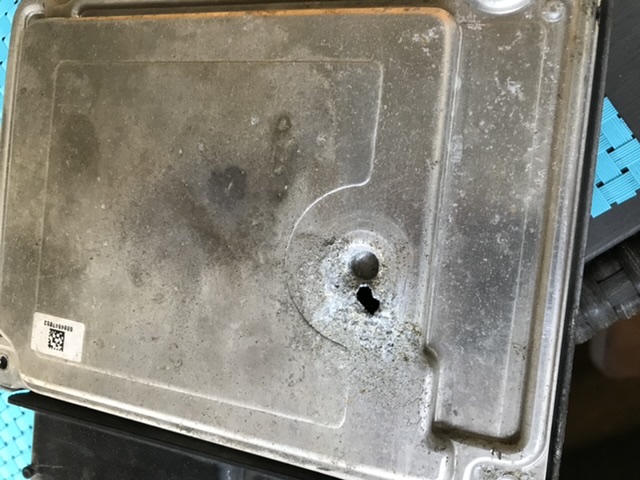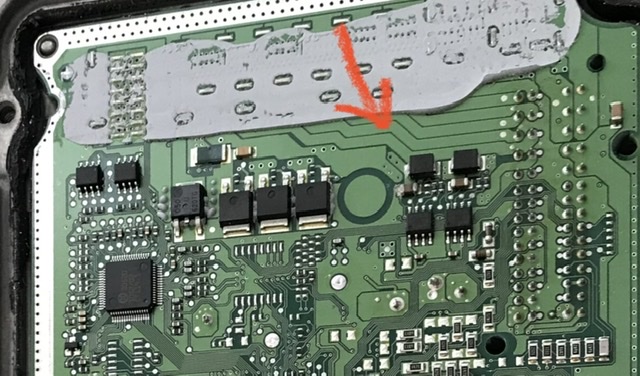Can you tell me what is this component. The size is 0603 (1.7mm x 0.8mm). I get OL if I try to measure it (resistance/diode mode) but it does not look like blown. I reckon it’s a capacitor…
P.S. It’s not from a game console 
Can you tell me what is this component. The size is 0603 (1.7mm x 0.8mm). I get OL if I try to measure it (resistance/diode mode) but it does not look like blown. I reckon it’s a capacitor…
P.S. It’s not from a game console 
Almost guarantee it’s a cap, in the low capacitance range, pf or less, which is typically indicated by colours colours such as this.
I suppose there is the unlikely chance it’s a fuse but I don’t think so (based on the traces it’s connecting to), if you remove it out of circuit you’ll likely get a well defined capacitance value which fits.
What’s this for dude?
Thanks! So it’s normal to get open line across a capacitor?
This PCB is from my car. The electronic control unit’s casing has a hole on it and there are few components corroded from a salt water.
Right, on cartain value caps you might read high megs but low caps such as this most meters will read OL
In this case it appears to be an inline cap which makes the liklihood of reading OL that much greater (as opposed to bypass)
I see, might be worthwhile showing a few pics to the components which have the corrsosion so I can (if i can) better advise on how to test ![]()
Thanks @Severence ! As you can see, there’s a hole on the casing, diameter of about 13mm. I can clearly see corrosion on one capacitor (size is 1206) and on one leg of the diode. I didn’t find any other corroded components. My plan was to remove the corroded capacitor as well as the good looking capacitor next to the corroded one and measure the capacitance of the good capacitor. Then I can order a new cap to replace the corroded cap.
I do not get any measurement values across the pins 2 and 3, only OL. Even from pin 2-GND, and pin3-GND
Diode seems to be fine and I get some diode value across 4 and 5.


Aside from the corroded components is this still functional?
The corroded capacitor appears to just be a bypass cap as far as I can see, if your reading OL on it, then it’s likely fine, though it will likely fail (short) later down the road, so, as you said it would be a good idea replacing it.
good call ![]() is there a wiring harness/connector anywhere? and/or any markings as to the voltage?
is there a wiring harness/connector anywhere? and/or any markings as to the voltage?
Just thinking it might be a good idea to power this thing up with your bench supply, if there are other faults it will make them easier to find, and it will allow you to measure the voltage where your corroded cap was so you might have a better idea as to the voltage rating for the replacement.
Yes, it should be. There has been some intermittent problems which corresponds to bad contacts.
I took the cap off and I get ~300kohms resistance and about 0.6 nF (occationally shows 130nF).
The good cap gives 100nF value and OL resistance (off the circuit).
I’m gonna plug it to PSU thru the connector. These are 12 V systems but I’ll check the voltage at the capacitor pads,
Sounds like it would eventually fail short if left (the 300k bad one) I’m just guessing here, but given how low values these are, the voltage rating may be quite high on them given there size.
Good luck man ![]()
The voltage at the cap pad was 8V so I ordered new cap of 100nF/25VDC, not sure if it should’ve been 10V or 16V cap…
I’m just hoping this is the only fault. But based on the symptom it sounds likely. I’ll let you know how it turned out.
The unit is working and car runs fine without fault codes. Thank you for the help!